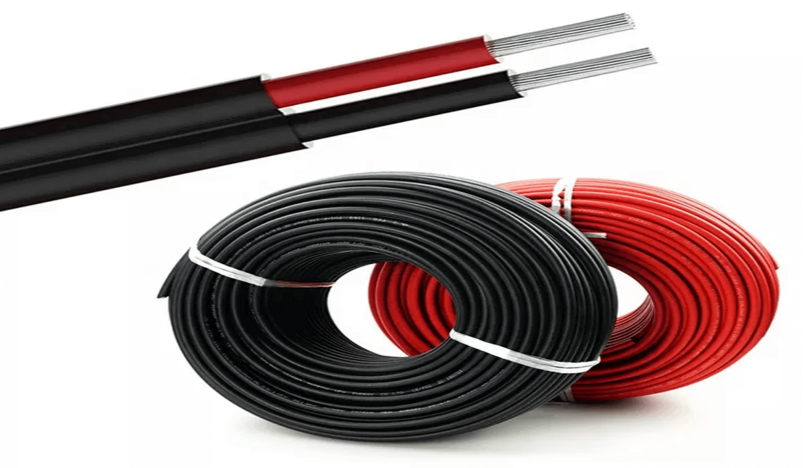
pixabay
The UAE is making significant strides in renewable energy, particularly in solar power. With ambitious goals for sustainability and energy diversification, the country is at the forefront of solar technology advancements. One key component of this growth is the evolution of solar cable technology. Innovations in this area not only improve efficiency but also enhance durability and performance, ensuring that solar projects in the UAE can withstand the unique environmental challenges of the region.
One of the most significant advancements in solar cable technology is the use of enhanced materials designed for extreme conditions. Modern solar cables often utilize cross-linked polyethylene (XLPE) insulation, which provides exceptional thermal stability, UV resistance, and protection against moisture. These materials are crucial for ensuring that cables perform reliably in the UAE’s harsh climate, characterized by high temperatures and intense sun exposure.
Innovations in the conductivity of solar cables have led to better energy transmission efficiency. New formulations of copper and aluminum alloys are being used to create cables that reduce energy loss during transmission. These improved conductive properties enable solar panels to transfer more energy to inverters, enhancing the overall performance of solar systems.
Recent advancements have resulted in solar cables that are both lightweight and flexible, making installation easier and more cost-effective. These cables can be easily routed through tight spaces without compromising on performance. The flexibility also helps in reducing mechanical stress during installation and operation, prolonging the lifespan of the cables.
Smart cable technology is becoming increasingly popular in the solar sector. These cables come equipped with sensors that monitor performance metrics such as temperature and electrical load. By providing real-time data, they enable proactive maintenance and help in detecting issues before they lead to system failures. This technology enhances the reliability and efficiency of solar installations in the UAE.
Modern solar cables now incorporate advanced protective features, such as water-blocking technology and abrasion-resistant sheaths. These innovations protect cables from moisture ingress, chemical exposure, and physical damage. In the UAE’s challenging environment, such features are essential for ensuring the longevity and reliability of solar installations.
With the growing diversity of solar projects in the UAE, there is a demand for customized solar cables tailored to specific applications. Cable manufacturers in the UAE are now offering a range of cables designed for different types of installations, including residential, commercial, and utility-scale solar farms. This customization allows for optimized performance based on the unique requirements of each project.
Sustainable practices are integral to the UAE’s renewable energy strategy. Innovations in solar cable technology now include the use of recyclable materials and environmentally friendly manufacturing processes. This focus on sustainability not only reduces the environmental impact of production but also supports the UAE’s commitment to a greener future.
As the solar industry in the UAE continues to grow, ensuring compliance with local standards becomes increasingly important. New solar cable innovations are designed to meet or exceed local and international regulations, ensuring safety and reliability in all solar installations. This compliance is essential for gaining public trust and encouraging further investment in renewable energy projects.
1. What are the key advancements in solar cable technology?
Key advancements include enhanced durability materials, improved conductivity, lightweight designs, smart cable technologies, and advanced protective features.
2. How do modern solar cables improve energy transmission?
Innovative materials and formulations improve conductivity, reducing energy loss and enhancing the overall efficiency of solar energy systems.
3. Why is flexibility important in solar cable design?
Flexible cables are easier to install, can navigate tight spaces, and are less prone to mechanical stress, which prolongs their lifespan.
4. What are smart cable technologies?
Smart cable technologies involve sensors integrated into the cables that monitor performance metrics, providing real-time data for proactive maintenance.
5. How do modern cables withstand UAE’s harsh climate?
Modern cables are made from materials like XLPE, which offer exceptional resistance to UV rays, heat, and moisture, ensuring reliability in extreme conditions.
6. Can solar cables be customized for specific projects?
Yes, manufacturers now offer customized cables tailored for different applications, ensuring optimized performance for residential, commercial, and utility-scale projects.
7. What role do sustainable practices play in solar cable production?
Innovations include using recyclable materials and environmentally friendly manufacturing processes, aligning with the UAE’s commitment to sustainability.
8. Are solar cables compliant with local regulations?
Yes, new innovations in solar cables are designed to meet or exceed local and international standards, ensuring safety and reliability in installations.
.jpg)
Qatar Secures Place Among the World's Top 10 Wealthiest Nations
.jpg)
Hamad International Airport Witnesses Record Increase in Passenger Traffic

Saudi Arabia: Any visa holder can now perform Umrah

What are Qatar's Labour Laws on Annual Leave?
Leave a comment